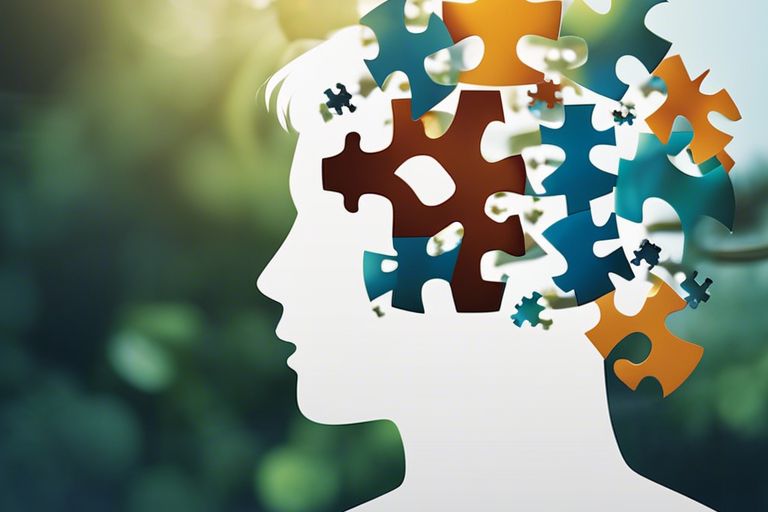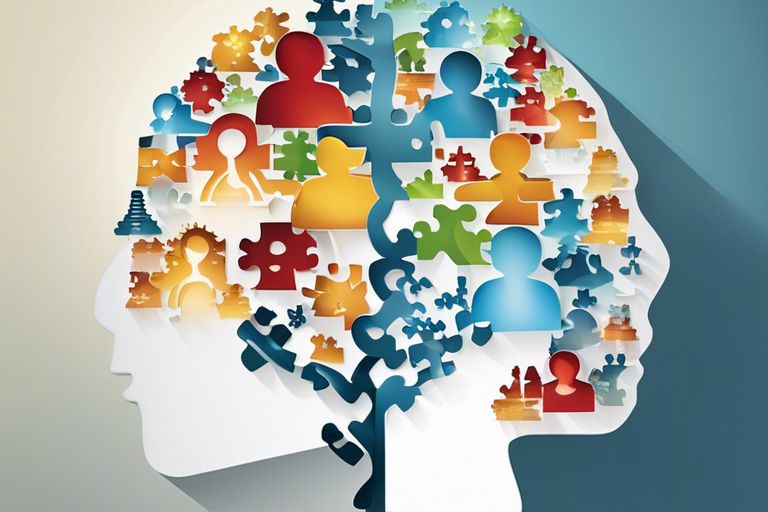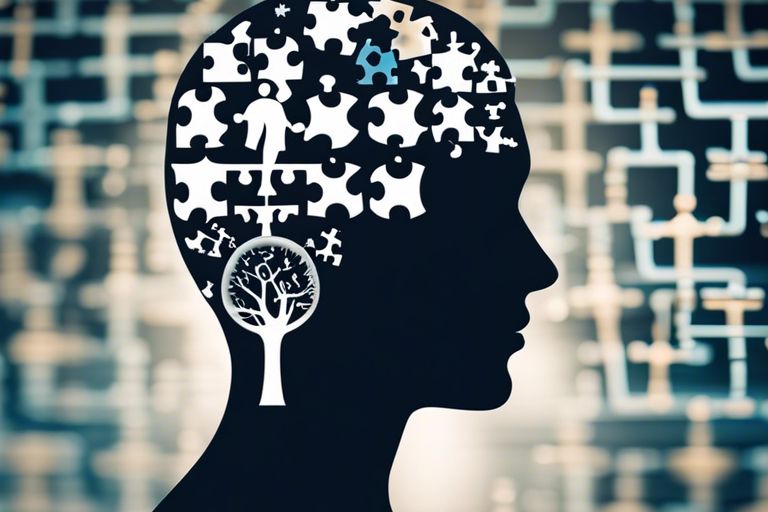Understanding the complexities of autism spectrum disorder involves delving into the intricate web of factors that contribute to the development of neurodevelopmental conditions. While the exact causes remain elusive, research suggests a combination of genetic, environmental, and neurological influences play a significant role. Genetic predisposition, prenatal factors, and early childhood experiences have all been identified as potential contributors to the onset of autism. Individuals with autism may have alterations in brain structure and function, impacting their social interactions, communication abilities, and sensory processing. By shedding light on the underlying causes of autism, we can improve early diagnosis, interventions, and support for individuals living with neurodevelopmental conditions.
Key Takeaways:
- Genetic factors play a significant role: Autism is influenced by a complex interplay of genetic factors, with certain genes predisposing individuals to neurodevelopmental conditions.
- Environmental factors can contribute: Exposure to certain environmental factors during pregnancy or early childhood may increase the risk of developing autism, although the exact mechanisms are still being studied.
- Brain development abnormalities are key: Researchers have found that abnormalities in the development of the brain, including differences in structure and function, are closely linked to the occurrence of autism and other neurodevelopmental conditions.
Genetic Contributions to Autism
Understanding the role of genetics in autism spectrum disorder (ASD) is crucial to unravelling the complexities of this neurodevelopmental condition. Genetic factors play a significant role in the development of autism, with research pointing towards a strong genetic component in the aetiology of ASD.
Hereditary Patterns in Autism
Studies have shown that autism tends to run in families, suggesting a hereditary component to the condition. Families with a history of ASD are more likely to have children with the condition compared to the general population. This heritability is supported by twin studies, which have indicated a higher concordance rate of autism in identical twins compared to fraternal twins.
Furthermore, parents who have a child with autism are more likely to have subsequent children with ASD, indicating a potential genetic predisposition within families. While the exact mechanisms of inheritance are complex and multifactorial, it is evident that genetic factors play a significant role in the manifestation of autism.
Specific Genes and Genetic Mutations
Research has identified certain genes and genetic mutations that are associated with an increased risk of autism. These include genes involved in brain development, synaptic function, and neuronal communication. Mutations in these genes can disrupt normal brain development and functioning, contributing to the characteristics associated with autism.
One specific gene implicated in autism is SHANK3, which plays a crucial role in synaptic function. Mutations in the SHANK3 gene have been linked to a subtype of autism that is characterized by severe intellectual disability and behavioural challenges. Understanding these specific genetic factors provides valuable insights into the underlying mechanisms of autism and paves the way for targeted interventions and treatments.

Environmental Factors in Autism Etiology
Understanding the potential environmental factors that contribute to the development of autism is crucial in shedding light on this complex neurodevelopmental condition. While genetic predispositions play a significant role, research has shown that environmental influences also play a part in the causation of autism spectrum disorder.
Prenatal Exposures and Risk
The prenatal period is a critical stage of development where the foetus is particularly vulnerable to various environmental factors that could increase the risk of autism. Exposure to certain substances such as pesticides, air pollution, maternal stress, and infections have been associated with a higher likelihood of developing autism. Additionally, factors like maternal nutrition and medication use during pregnancy can also impact foetal development and potentially increase the risk of neurodevelopmental conditions.
Postnatal Environmental Influences
After birth, postnatal environmental influences continue to play a role in the development of autism. Exposure to toxins such as lead, mercury, and other environmental pollutants can adversely affect neurological development and increase the risk of autism spectrum disorder. Furthermore, factors like exposure to second-hand smoke, traumatic events, and nutritional deficiencies in early childhood have also been linked to an increased likelihood of autism.
It is important to note that while genetic factors are recognised as a significant contributor to autism, environmental influences can interact with genetic predispositions, ultimately affecting the development of the condition. Recognising and understanding these environmental factors is crucial in formulating effective strategies for prevention and early intervention in individuals at risk of autism spectrum disorder.

The Intersection of Genetics and Environment
In the study of neurodevelopmental conditions like autism, researchers have long been intrigued by the complex interplay between genetics and environmental factors. Understanding how these two forces intersect can provide crucial insights into why autism occurs and how it manifests in individuals. One particularly interesting area of research examines into the link between genetic predispositions and external influences, shedding light on the intricate mechanisms that underpin neurodevelopmental disorders.
Epigenetic Mechanisms in ASD Development
Rett Syndrome: Exploring the Autism Link has opened up new avenues of investigation into epigenetic mechanisms in autism spectrum disorder (ASD) development. Epigenetics refers to changes in gene expression that do not involve alterations to the underlying DNA sequence. These changes can be influenced by environmental factors and are increasingly recognised as playing a key role in the development and progression of ASD.
The Role of Gene-Environment Interactions
Another critical aspect of understanding autism aetiology is the role of gene-environment interactions. Research suggests that genetic predispositions alone may not be sufficient to cause autism and that environmental factors can act as triggers or modifiers. Factors such as prenatal exposure to toxins, maternal infections during pregnancy, and early childhood environmental influences have all been implicated in influencing gene expression and brain development in ways that may predispose individuals to neurodevelopmental conditions.
Unravelling the intricate dance between genetic susceptibilities and environmental influences is crucial in gaining a comprehensive understanding of autism. By identifying the specific interactions that contribute to the development of ASD, researchers can potentially uncover new avenues for targeted interventions and personalised treatments that address the underlying causes of these complex neurodevelopmental conditions.
Neurobiological Insights into ASD
Brain Structure and Connectivity Differences
Individuals with Autism Spectrum Disorder (ASD) often exhibit brain structure and connectivity differences compared to neurotypical individuals. Studies have shown that there are abnormalities in the size and organisation of certain brain regions in individuals with ASD. These differences can affect how information is processed and integrated within the brain.
Moreover, research has indicated that there may be atypical connectivity patterns between different brain regions in individuals with ASD. These altered connections can impact communication between brain areas responsible for various functions, potentially contributing to the symptoms associated with ASD.
Neurotransmitter Dysregulation and Sensory Processing
Neurotransmitter dysregulation and sensory processing abnormalities are also commonly observed in individuals with ASD. The imbalance of neurotransmitters such as serotonin, dopamine, and GABA has been linked to the development and manifestation of ASD symptoms. Furthermore, individuals with ASD may experience sensory sensitivities or difficulties in processing sensory information, leading to challenges in regulating their responses to the environment.
Understanding the interplay between neurotransmitter dysregulation and sensory processing abnormalities is crucial in exploring potential treatment approaches for individuals with ASD. By targeting these neurobiological mechanisms, researchers and clinicians aim to develop interventions that can improve the quality of life for individuals with ASD.

Concluding Thoughts on Why Autism Occurs
Understanding the causes of neurodevelopmental conditions like autism is crucial in improving early intervention and support for individuals affected by these conditions. While genetics play a significant role, environmental factors also contribute to the complexity of autism spectrum disorders. By unpacking the various influences on neurodevelopment, we can better equip ourselves as a society to provide targeted interventions and support systems for individuals with autism. Ongoing research and awareness are essential in unraveling the intricate reasons behind why autism occurs, paving the way for a more inclusive and supportive environment for those living with neurodevelopmental conditions.
FAQ
Q: What is autism?
A: Autism, also known as Autism Spectrum Disorder (ASD), is a complex neurodevelopmental condition that affects communication, social interaction, and behaviour.
Q: What causes autism?
A: The exact cause of autism is not fully understood, but it is believed to involve a combination of genetic and environmental factors.
Q: How is autism diagnosed?
A: Autism is usually diagnosed through a comprehensive assessment that includes observing behaviour, interviewing parents and caregivers, and using standardized screening tools.
Q: Can autism be cured?
A: There is currently no cure for autism, but early intervention and support can help individuals with autism lead fulfilling lives.
Q: Are vaccines linked to autism?
A: Numerous scientific studies have found no link between vaccines and autism. The idea that vaccines cause autism has been debunked and discredited.
Q: Is autism more common in boys or girls?
A: Autism is diagnosed more frequently in boys than girls, with estimates suggesting that boys are around four times more likely to be diagnosed with autism.
Q: How can we support individuals with autism?
A: Supporting individuals with autism involves creating an inclusive and understanding environment, providing therapy and educational interventions, and promoting acceptance and advocacy for their rights and needs.







